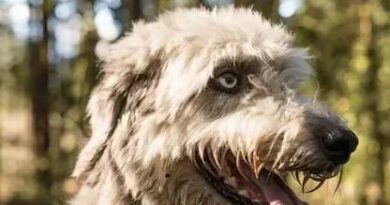What is Hair shedding in dogs
What is Hair Shedding in Dogs?
Hair shedding in dogs refers to the natural process where dogs lose their old or damaged hair to make way for new growth. This phenomenon is a normal part of a dog’s life cycle and can vary significantly among different breeds. Understanding the reasons behind shedding is crucial for dog owners who want to maintain their pet’s health and hygiene.
Why Do Dogs Shed Hair?
Dogs shed hair for various reasons, primarily due to seasonal changes, hormonal fluctuations, and overall health. During spring and fall, many breeds experience increased shedding as they transition between their winter and summer coats. Additionally, factors such as stress, poor nutrition, and underlying health issues can also contribute to excessive shedding.
Types of Shedding in Dogs
There are two main types of shedding in dogs: seasonal shedding and continuous shedding. Seasonal shedding occurs in breeds that have a double coat, where they lose their undercoat during specific times of the year. Continuous shedding, on the other hand, is common in breeds with single coats, where hair loss happens consistently throughout the year.
How to Manage Shedding in Dogs
Managing shedding in dogs involves regular grooming practices, including brushing and bathing. Frequent brushing helps remove loose hair and reduces the amount of fur that ends up on furniture and clothing. Additionally, using the right grooming tools can make a significant difference in controlling shedding and keeping your dog’s coat healthy.
Diet and Shedding
A dog’s diet plays a vital role in the health of its coat and can influence shedding. A balanced diet rich in essential fatty acids, vitamins, and minerals can promote a healthy coat and minimize excessive shedding. Consulting with a veterinarian about the best dietary options for your dog can help address shedding issues effectively.
Health Issues Related to Shedding
Excessive shedding can sometimes indicate underlying health problems, such as allergies, skin infections, or hormonal imbalances. If you notice a sudden increase in shedding or bald patches on your dog’s skin, it’s essential to consult a veterinarian for a thorough examination and appropriate treatment.
Seasonal Shedding Patterns
Understanding seasonal shedding patterns can help dog owners anticipate when their pets will shed the most. Typically, dogs shed more in the spring as they lose their winter coat and again in the fall when they prepare for winter. Being aware of these patterns can help owners prepare for increased grooming and cleaning during these times.
Breeds That Shed the Most
Some dog breeds are known for shedding more than others. Breeds like the Siberian Husky, German Shepherd, and Labrador Retriever are notorious for their heavy shedding. Conversely, breeds such as the Poodle and Bichon Frise are considered low-shedding and may be more suitable for individuals with allergies.
Tools for Reducing Shedding
Investing in the right grooming tools can significantly reduce shedding in dogs. Tools such as de-shedding brushes, grooming gloves, and high-velocity dryers can help manage loose hair effectively. Regular grooming sessions not only keep your dog’s coat healthy but also strengthen the bond between you and your pet.
When to Seek Professional Help
If shedding becomes excessive or is accompanied by other symptoms such as itching, redness, or changes in behavior, it may be time to seek professional help. A veterinarian or a professional groomer can provide valuable insights and recommend appropriate treatments or grooming techniques to address the issue.




